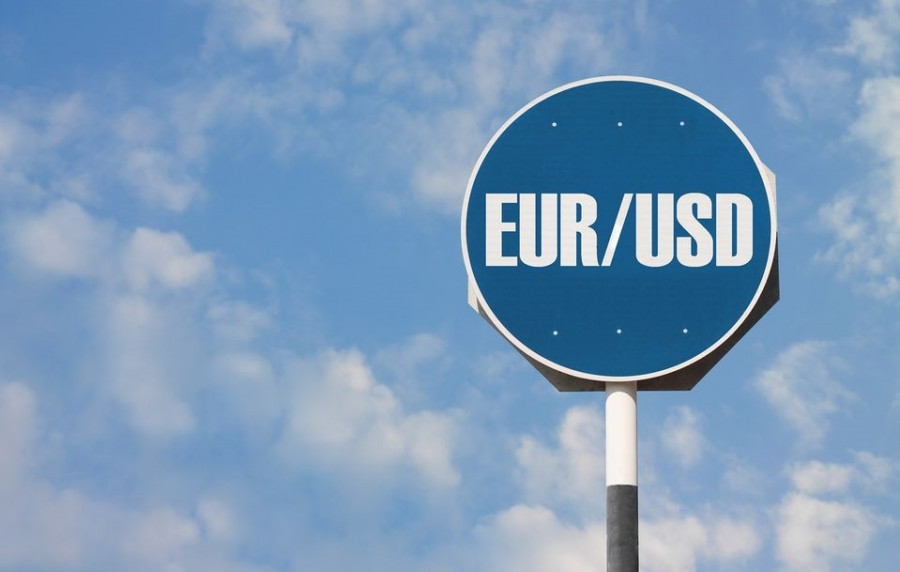The euro-dollar pair continues to trade near multi-year highs, hovering in the 1.13–1.14 range. On Friday, buyers of EUR/USD reached 1.1474 — the highest price since February 2022. However, the 1.1400 level proved too difficult for the bulls to break decisively, and Friday's session closed at 1.1363. Attempts to push higher have also been unsuccessful so far. Nevertheless, the current situation has its upside: the strong downward pullbacks allow EUR/USD bulls to re-enter the market at better prices. Despite sellers regularly taking short-term control, the broader upward trend remains in place, driven by ongoing dollar weakness.

The dollar continues to come under pressure, increasingly weighed down by concerns over stagflation in the U.S. Last week's reports on CPI and PPI growth — which showed inflation slowing in the U.S. — did little to calm market participants. These figures have already lost relevance, as they reflect the situation in March, before Donald Trump's new tariff plans were implemented. More up-to-date macro indicators suggest entirely different dynamics.
For example, according to data published Friday by the University of Michigan, inflation expectations in April surged to 6.7% — the highest since October 2022. Meanwhile, the U.S. consumer sentiment index plunged to 50.8 — the lowest reading since July 2022.
Federal Reserve officials have also expressed concern over rising stagflation risks — concerns that were already evident at the March FOMC meeting, according to the minutes. Nearly all members acknowledged that inflation risks are "tilted to the upside," while GDP growth projections for 2025 were revised downward. Some participants also noted that the Fed may need to make "difficult decisions" if economic growth and employment outlook worsens while inflation proves more persistent than expected.
The minutes didn't specify what those "difficult decisions" might be, but judging by recent comments, the Fed appears ready to pause monetary policy easing. Fed Chair Jerome Powell stated on April 4 that the central bank would not cut rates "until there's a clearer picture of the overall impact." Last week, he made no public comments on Trump's decisions, which further complicated the economic outlook (especially regarding the consequences of the tariff policy). Therefore, Powell is expected to take a more defined — likely more hawkish and pessimistic — stance when he speaks again on Wednesday, April 16.
New York Fed President John Williams, one of the most influential Fed officials, also supported a pause in monetary easing, though he did so more indirectly. He noted that expected labor force slowdowns (due to reduced immigration/increased deportations and tariff-related economic pressure) would significantly restrain real GDP growth — potentially down to 1.0% or lower. He also predicted that the unemployment rate could rise to 4.5–5.0%. In that context, Williams said current monetary policy settings are "appropriately positioned" to manage emerging risks.
Despite this, market expectations remain dovish. According to the CME FedWatch Tool, the probability of a 25-basis-point rate cut at the June meeting is 65%. The market expects another cut in July or September and one or two more by year-end. Overall, traders anticipate a total of 75–100 basis points in rate cuts — which is keeping pressure on the U.S. dollar.
If inflation accelerates again in April–May, the Fed's options may become more limited, further destabilizing markets. In such a case, stagflation risks in the U.S. would increase even more. This would put the dollar in a kind of zugzwang, where any policy decision would negatively affect the currency.
All of this reinforces the case for prioritizing long positions on EUR/USD. This strategy will remain relevant until the U.S. and China either begin formal negotiations or symbolically ease their tariff standoff, signaling a potential reconciliation.
There are no signs of de-escalation as of now. Therefore, southern pullbacks in the EUR/USD pair should still be seen as opportunities to enter long positions.
From a technical standpoint, EUR/USD remains near the upper or between the mid and upper lines of the Bollinger Bands on all higher timeframes and above all Ichimoku indicator lines (except on H4), which continues to signal long bias. Upward targets are set at 1.1400 (upper Bollinger Band on H1), 1.1450 (upper Bollinger Band on H4), and ultimately the psychologically significant level of 1.1500.




















